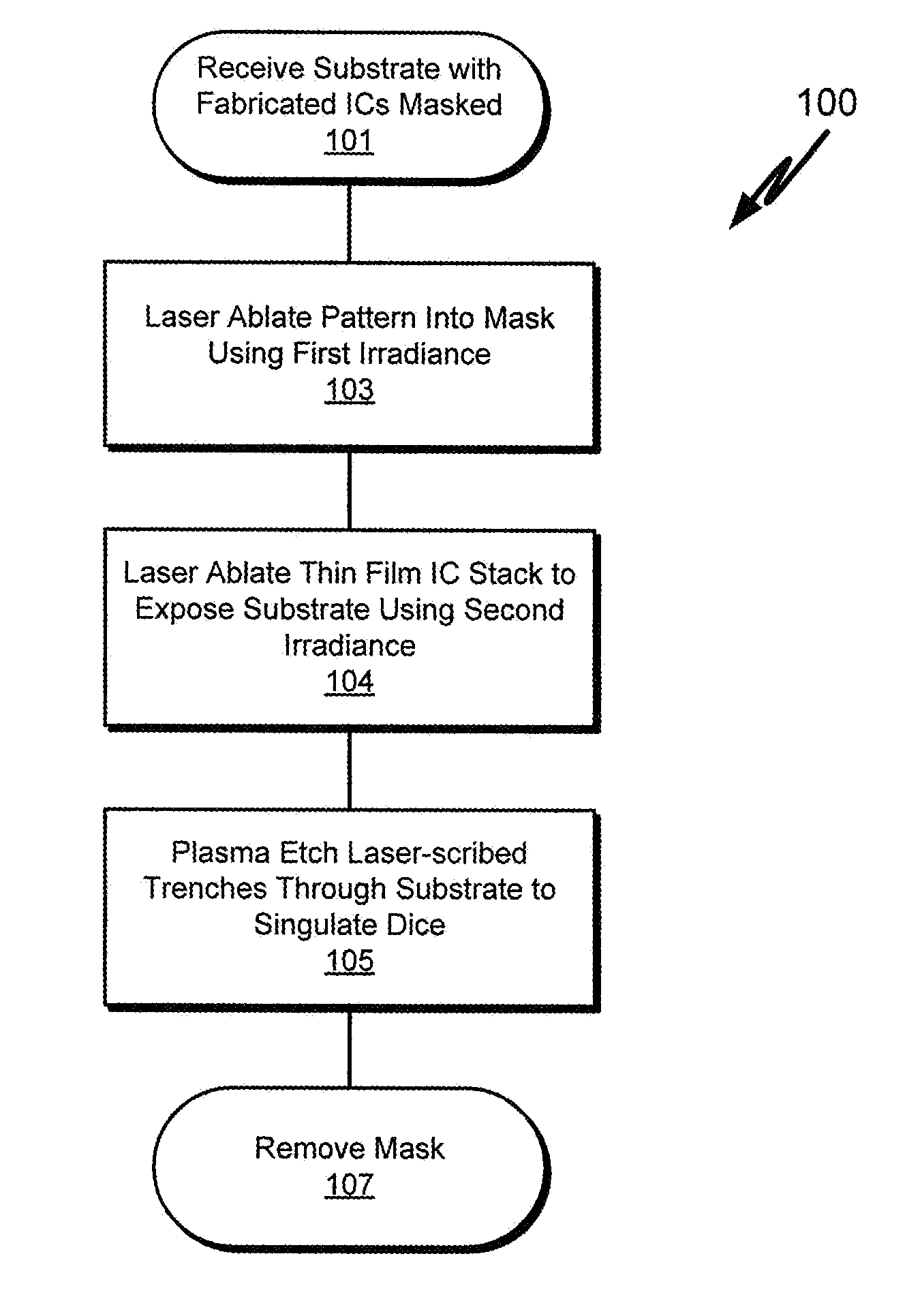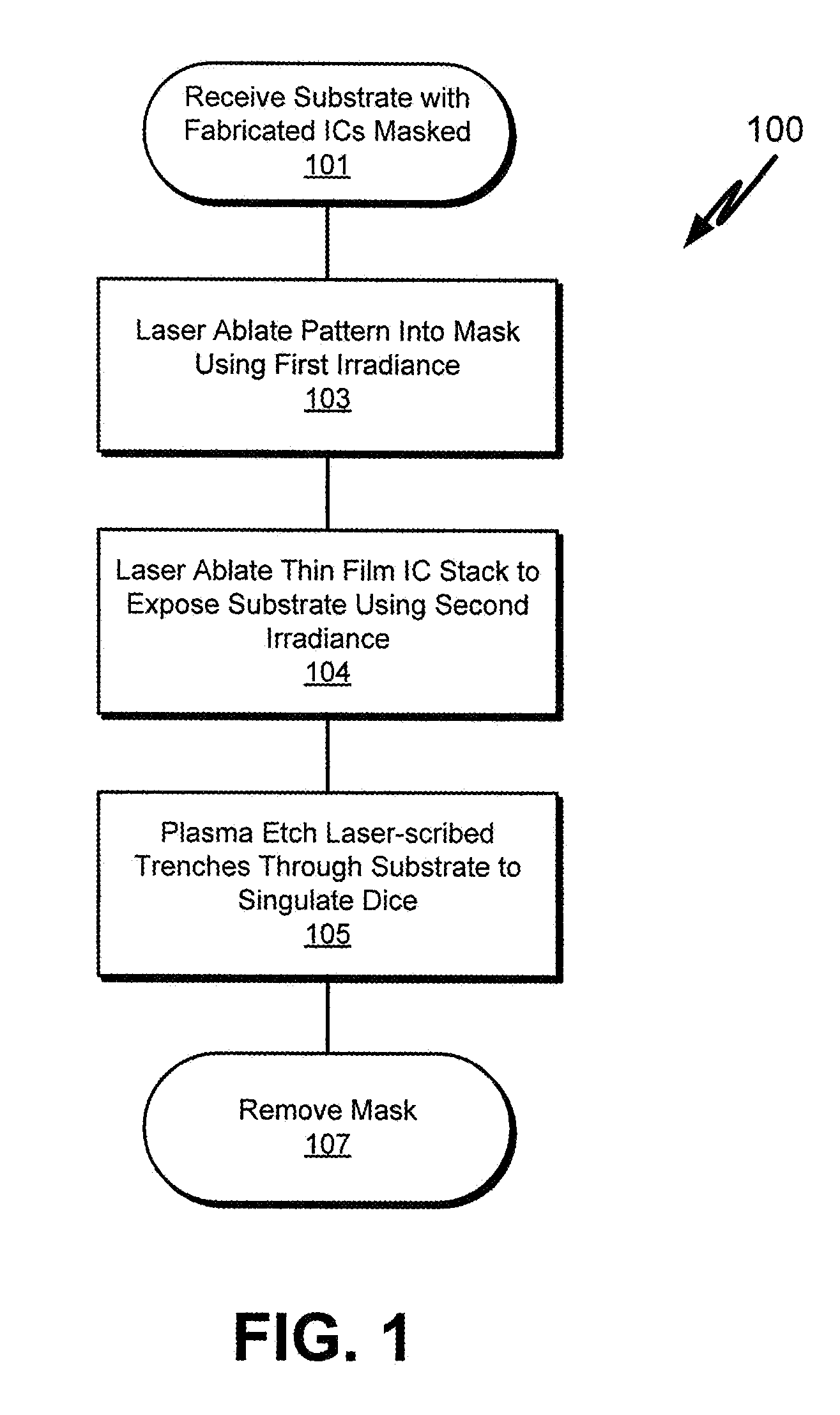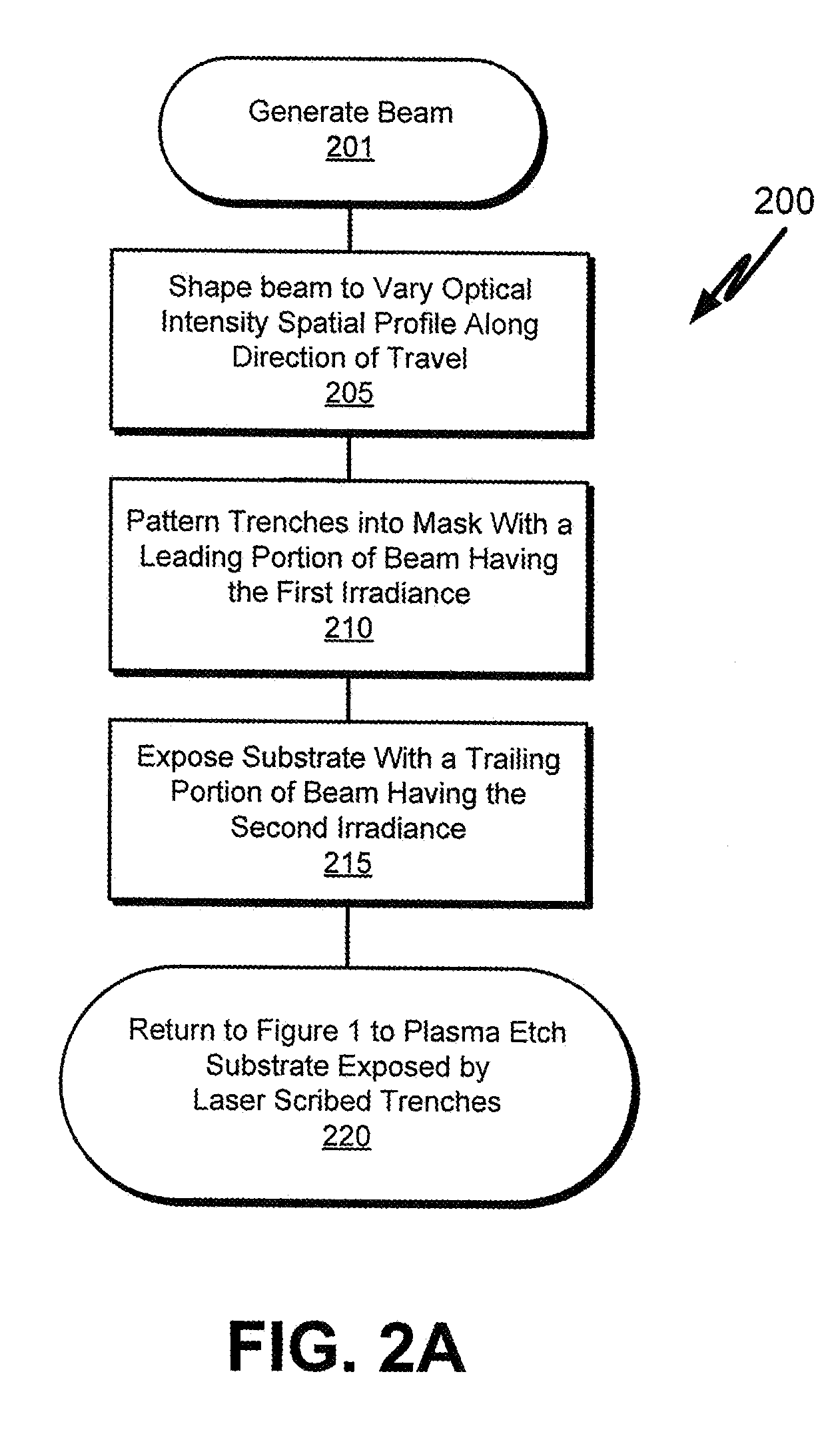Multi-step and asymmetrically shaped laser beam scribing
a laser beam and asymmetrical technology, applied in the field of semiconductor processing, can solve the problems of limited throughput, production issues or throughput limits, and the patterning resist may render the implementation cost prohibitive, and achieve the effect of increasing irradiance, reducing or increasing the width of the ker
- Summary
- Abstract
- Description
- Claims
- Application Information
AI Technical Summary
Benefits of technology
Problems solved by technology
Method used
Image
Examples
Embodiment Construction
[0031]Methods of dicing substrates, each substrate having a plurality of ICs thereon, are described. In the following description, numerous specific details are set forth, such as femtosecond laser scribing and deep silicon plasma etching conditions in order to describe exemplary embodiments of the present invention. However, it will be apparent to one skilled in the art that embodiments of the present invention may be practiced without these specific details. In other instances, well-known aspects, such as IC fabrication, substrate thinning, taping, etc., are not described in detail to avoid unnecessarily obscuring embodiments of the present invention. Reference throughout this specification to “an embodiment” means that a particular feature, structure, material, or characteristic described in connection with the embodiment is included in at least one embodiment of the invention. Thus, the appearances of the phrase “in an embodiment” in various places throughout this specification ...
PUM
| Property | Measurement | Unit |
|---|---|---|
| diameter | aaaaa | aaaaa |
| pulse width | aaaaa | aaaaa |
| thick | aaaaa | aaaaa |
Abstract
Description
Claims
Application Information
 Login to View More
Login to View More - R&D
- Intellectual Property
- Life Sciences
- Materials
- Tech Scout
- Unparalleled Data Quality
- Higher Quality Content
- 60% Fewer Hallucinations
Browse by: Latest US Patents, China's latest patents, Technical Efficacy Thesaurus, Application Domain, Technology Topic, Popular Technical Reports.
© 2025 PatSnap. All rights reserved.Legal|Privacy policy|Modern Slavery Act Transparency Statement|Sitemap|About US| Contact US: help@patsnap.com



